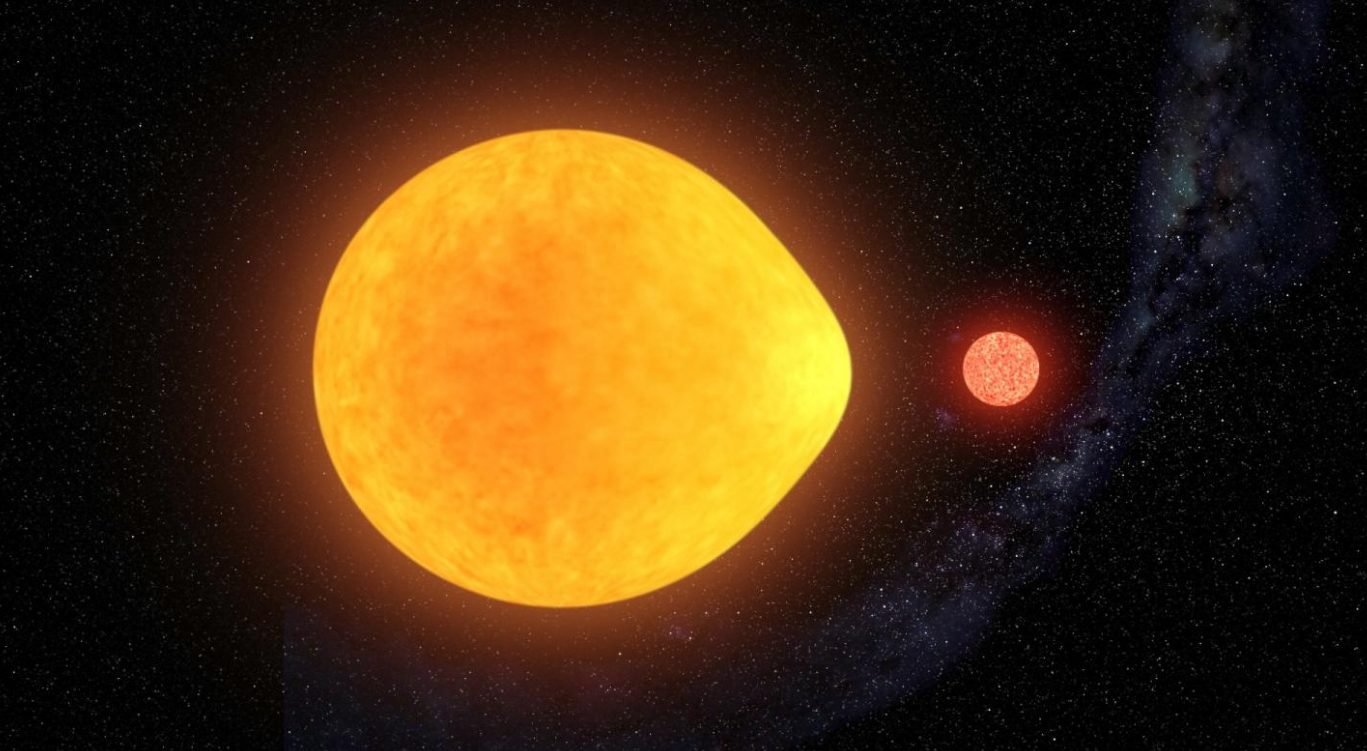
© Gabriel Perez Dias/IAC
Australian scientists have discovered a new type of star that 'pulsates' on one side. The star is believed to have existed in theory for decades but the new findings prove it's a reality after all.
A
research paper published in nature.com reveals the star, called HD74423 and is situated around 1,500 light years from Earth, pulsates on just the one side.
"It has long been suspected that tidal forces in close binary stars could modify the orientation of the pulsation axis of the constituent stars," the study reads.
"Such stars have been searched for, but until now never detected."Sydney Institute for Astronomy's Dr Simon Murphy, who co-authored the paper,
said the star caught his attention due to the fact it is chemically peculiar.
"Stars like this are usually fairly rich with metals — but this is metal poor, making it a rare type of hot star," Dr Murphy said in
a University of Sydney article.
Pulsating in stars can cause variations in brightness — as if stars are 'breathing'. These changes are due to the area and temperature of the star's surface layers. Before the discovery of HD74423, which is 1.7 times the mass of the Sun, stars had only been observed pulsating on both sides. So, what makes it different?
The researchers found the anomaly is due to its close proximity to a red dwarf — a dim, small star, which actually distorts its gravitational pull due to its short orbital time. Its led to the pulsating star forming more of a tear drop shape due to the red dwarf's orbit.
Interestingly, it was first noticed by amateur sleuths pouring over publicly-available data provided by
NASA's TESS satellite. This goes to show, the internet's community of amateur astronomers can truly do anything they set their minds to.
Via University of Sydney
Comment: According to the Electric Universe theory, the pulses exhibited by some stars are electric arcs:
"Some pulsars oscillate with periods in the millisecond range. Their radio pulse characteristics are: the 'duty cycle' is typically 5% (i.e., the pulsar flashes like a strobe light - the duration of each output pulse is much shorter than the length of time between pulses); some individual pulses are quite variable in intensity; the polarization of the pulse implies the origin has a strong magnetic field; magnetic fields require electrical currents. These characteristics are consistent with an electrical arc (lightning) interaction between two closely spaced binary stars, first postulated by K. Healy and A. Peratt
. Relaxation oscillators with characteristics like this have been known and used by electrical engineers for many years.
Further evidence of plasma discharge between two bodies being the cause of the pulses has been given by Hubble;
"Hubble Space Telescope Observations Reveal Coolest and Oldest White Dwarf Stars in the Galaxy: "Using the Hubble Space Telescope, astronomers at the Naval Research Laboratory (NRL) have detected five optical companion stars orbiting millisecond pulsars. Only two other such systems are known. Three of the companions are among the coolest and oldest white dwarf stars known." "
Source.
Even in a fluid environment that level of plastic distortion would never been seen.